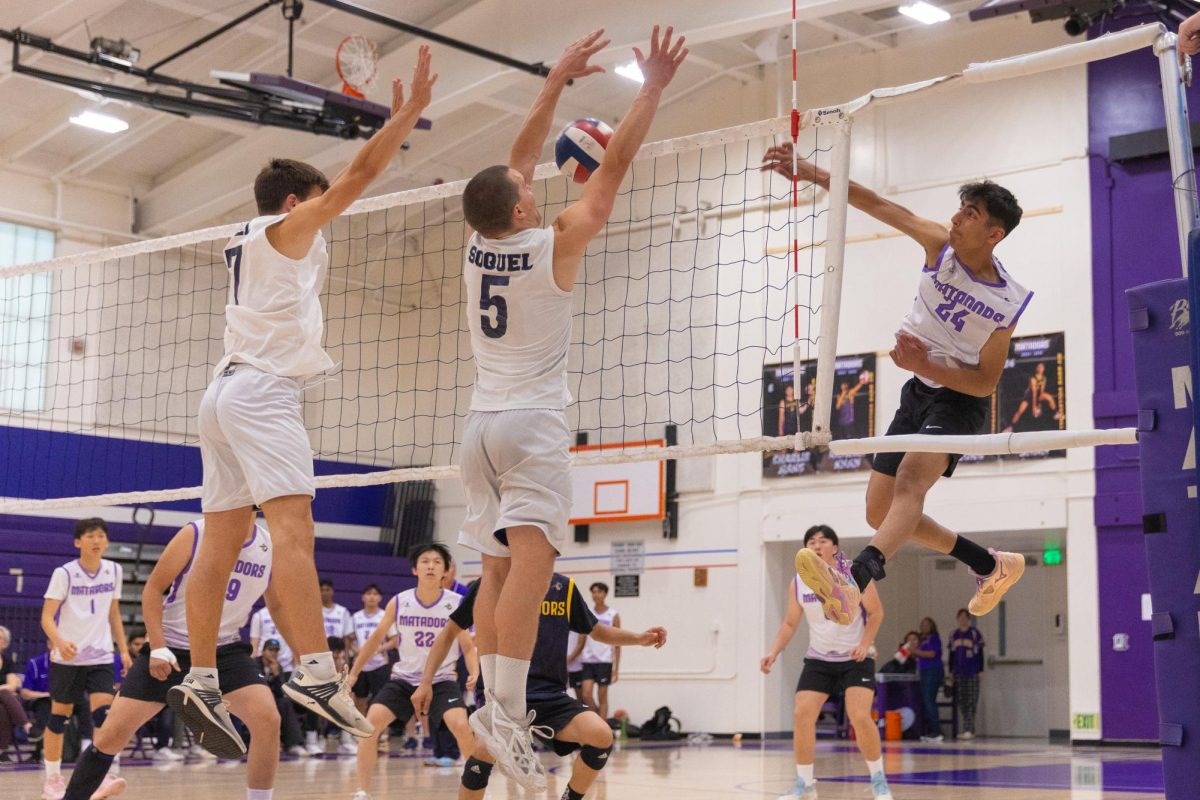Overcoming a weightlifting plateau seemed nearly impossible to junior Mahika Pandit. Though social media conditioned her to break through with Herculean effort and bulky equipment, Pandit set a new personal record almost by accident — she went from deadlifting 200 pounds to 225 pounds in her pajamas, without any other gear.
This was Pandit’s biggest milestone since she started weightlifting during the COVID-19 pandemic. Unlike Pandit’s experience with running or biking, where improvement felt vague or subjective, weightlifting grew on her since it offered concrete numbers, such as more reps and heavier weights.
“With lifting, when you make progress, it’s very plain,” Pandit said. “You can’t hide it and you can’t deny that you’re moving forward. It feels like you’ve accomplished something. That’s the biggest thing for me — that I’m like, ‘Oh, I didn’t ever think I could do that.’”

Similarly, MVHS parent Mungree Singh’s most notable memories from her weightlifting journey is hitting a personal record by bench pressing 25 pounds with each arm, totaling 50 pounds. For Singh, the numbers on the weights aren’t just indicators of strength — they also represent personal growth.
“You always doubt yourself because you don’t want to drop the weights and hurt yourself,” Singh said. “But I do feel good. I feel like I can conquer any role or take on any individual if I have to. I’m going to be 59 this year, so I’m super excited at how I feel just because of my exercise routine.”
Every workout is unique, catering to each individual’s goals. At Pandit’s peak, she followed a five-day split workout routine by lifting weights five days a week and targeting different muscle groups on different days. Alongside the highs from setting new personal records, friends and family would compliment Pandit’s appearance, boosting her self-confidence and keeping her motivated.
Singh’s routine is slightly more intense — she takes six 5 a.m. classes a week at Orangetheory Fitness, which require her to wake up at 3:45 a.m. She says the effort is worth it because weightlifting serves as a form of preventative health care.
“I’m aging,” Singh said. “I need to make my body stronger, and part of that is starting to lift weights. If you’re in a hospital for say, two weeks or three weeks, your muscle mass goes away really quickly. So the intent for me is always to ensure a quicker recovery for myself, just in case.”
Singh’s worries aren’t unfounded — muscle mass decreases by 2-5% for each day someone is on bedrest, and in the U.S., over 30% of elderly patients leave the hospital more disabled than when they arrived.

On the other end of the spectrum, strength training not only increases muscle mass but also boosts longevity, on top of improving one’s cognitive abilities, cardiovascular health and mood — especially for women. Its popularity has surged since the COVID-19 pandemic as people like Pandit turned to weight lifting for exercise and embraced its benefits.
Sophomore Winnie Liang also began training with weights during COVID-19, but mainly as a supplement to kickboxing and wrestling. She didn’t approach weightlifting seriously until last year, after being inspired by watching a MVHS wrestling teammate “muscle through” her matches.
“My mom also likes to go to the gym, so she brought me there and taught me how to use the equipment,” Liang said. “The first time I stepped into the gym, I noticed a lot of people who had already been there for a long time. They knew what they were doing. And when I first went in, I was still immature. I would look at other people and worry, ‘Will they judge me? If I do something wrong, will people look down on me?’ But once you start going to the gym, you do actually make a lot of friends. Those who are older than you are very happy to help you out.”
Likewise, Singh says part of her pride from hitting her 25-pound personal record was sharing her achievement with her “gym girlfriends” the following morning. While not everyone she meets at the gym is as supportive, she also finds herself motivated to prove people’s expectations wrong.
“I see the guys looking at me in the gym when I lift a 60 or 70-pound weight, like, ‘Can she lift it?’ so it becomes a challenge for yourself,” Singh said. “Everybody has predetermined biases of what somebody else can or can’t do. Gender, height, ethnicity, you name it — I’ve got it all coming at me, not only in the gym but also in the office. It’s everywhere. So you learn to keep going and believe in who you are and what you can do.”

Liang still occasionally feels self-conscious about her appearance when going to the gym, especially when older men react with surprise to her lifting the same weight as them or showing her muscle definition, believing that a stigma towards more masculine women is still present. On the other hand, Singh believes society has pivoted to a more positive perspective: that women can work on their bodies to be healthy and get stronger.
“When I was growing up, women that lifted weights looked like Arnold Schwarzenegger,” Singh said. “Today, the idea of women lifting weights is very feminine — can I say sexy? I mean, my girls tell me, ‘Mom, I want your calves,’ so gaining muscle is becoming attractive. It is attractive to me.”
Liang believes that Singh’s perspective is not the status quo, and progress still has to be made on a broader societal scale. Personally, she’s learned to center her weightlifting goals around progress in kickboxing and wrestling, rather than her appearance.
“The system that has been created for the conventional beauty standards of women has to be broken,” Liang said. “Because right now, we’re still stuck in that traditional structure in an implicit way. And the only way to break out of that mindset is to challenge it.”












